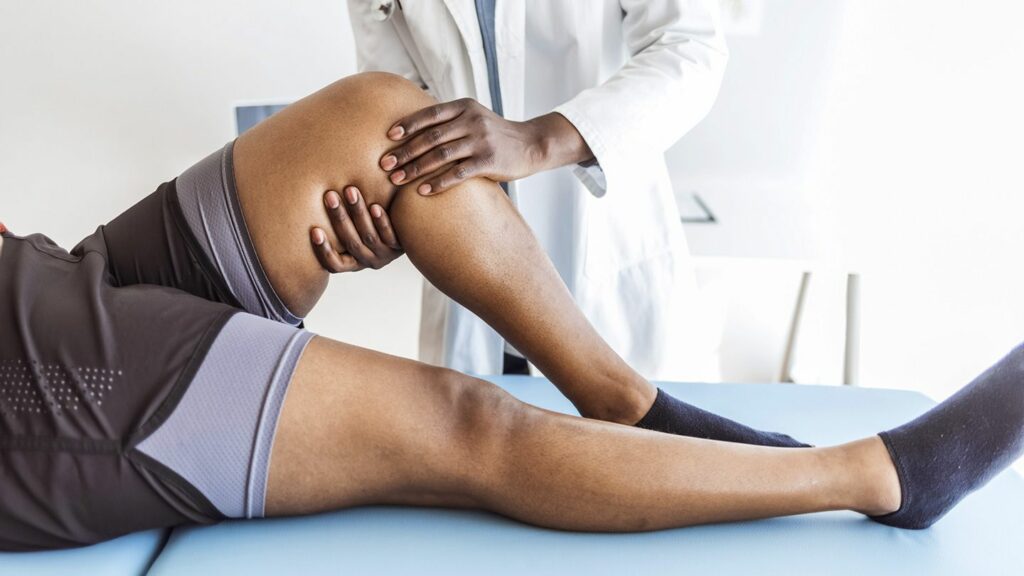Experiencing pain in the knee and ankle can be more than just physical discomfort. It can affect one’s ability to perform daily activities and hinder their overall quality of life. Knee and ankle pain are prevalent issues that can be caused by various factors. In this article, we will delve into the root causes of knee and ankle pain, common conditions, preventive measures, treatment options, and lifestyle changes to promote joint health. So, let’s explore how we can find relief from knee and ankle pain and get back to enjoying an active and pain-free life.
Contents
Understanding Knee Pain
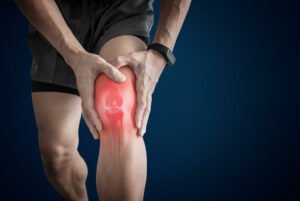
Knee pain is discomfort, soreness, or pain experienced in or around the knee joint. The knee joint is a complex structure that allows the leg to bend and straighten, facilitating movements like walking, running, jumping, and squatting. It is made up of bones, cartilage, ligaments, tendons, and synovial fluid, all working together to ensure proper function and stability.
There are numerous potential causes of knee pain, ranging from acute injuries to chronic conditions. Some common causes of knee pain include:
- Injuries: These can include ligament tears (e.g., anterior cruciate ligament or ACL tear), meniscus tears, fractures, dislocations, or strains/sprains.
- Arthritis: Osteoarthritis and rheumatoid arthritis are the most common forms of arthritis affecting the knee joint, leading to joint inflammation, pain, and stiffness.
- Tendonitis: Inflammation of the tendons around the knee, such as patellar tendonitis (jumper’s knee) or iliotibial band syndrome (ITBS).
- Bursitis: Inflammation of the bursae (fluid-filled sacs that cushion the knee joint).
- Overuse or Repetitive Stress: Activities involving frequent kneeling, squatting, or running can lead to overuse injuries.
Common Knee Pain Conditions
There are several common knee pain conditions that people may experience. These conditions can range from mild and temporary discomfort to more severe and chronic issues. Here are some of the most prevalent knee pain conditions:
- Osteoarthritis: Osteoarthritis is a degenerative joint disease and one of the most common causes of knee pain, especially in older adults. It occurs when the protective cartilage that cushions the ends of bones wears down over time, leading to pain, stiffness, and reduced joint flexibility.
- Patellofemoral Pain Syndrome (Runner’s Knee): This condition involves pain around or behind the kneecap (patella) and is often associated with activities that include running, jumping, or bending the knee repeatedly. It is caused by imbalances in the muscles around the knee joint, leading to improper tracking of the patella.
- Meniscus Tears: The menisci are C-shaped cartilage discs that act as shock absorbers between the thigh bone (femur) and shinbone (tibia). Tears in the meniscus can result from sudden twisting movements or wear and tear, causing pain, swelling, and limited knee movement.
- Anterior Cruciate Ligament (ACL) Injury: The ACL is one of the major ligaments in the knee that helps stabilize it. ACL injuries often occur during sports or activities that involve sudden stops, changes in direction, or direct blows to the knee. They can cause severe pain, swelling, and instability.
Understanding Ankle Pain
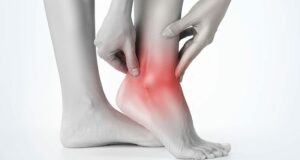
Ankle pain is discomfort, soreness, or pain experienced in or around the ankle joint. The ankle joint is a complex joint that connects the lower leg bones (the tibia and fibula) to the foot’s bones (the talus and calcaneus). It allows for various movements, including dorsiflexion (bending the foot upward), plantarflexion (pointing the foot downward), inversion (turning the sole inward), and eversion (turning the sole outward).
Ankle pain can be caused by a variety of factors, including:
- Sprains and Strains: Ankle sprains are one of the most common causes of ankle pain. They occur when the ligaments that support the ankle are stretched or torn due to sudden twisting or rolling of the foot, often during physical activities.
- Fractures: Ankle fractures can happen due to traumatic injuries, such as falls or accidents, and can involve the bones of the ankle joint, including the tibia, fibula, and talus.
- Tendonitis: Inflammation of the tendons around the ankle, such as Achilles tendonitis (inflammation of the Achilles tendon at the back of the ankle).
- Arthritis: Various forms of arthritis, including osteoarthritis and rheumatoid arthritis. Furthermore, it causes ankle pain and stiffness.
- Bursitis: Inflammation of the bursae (small fluid-filled sacs) around the ankle joint.
- Gout: Gout is a type of inflammatory arthritis that is a result of the buildup of uric acid crystals. Furthermore, it can affect the ankle joint.
Common Ankle Pain Conditions
Several common conditions can cause ankle pain. These conditions can range from mild to severe, and they may result from acute injuries, chronic overuse, or underlying medical conditions. Here are some of the most prevalent ankle pain conditions:
- Ankle Sprains: Ankle sprains occur when the ligaments that support the ankle joint are stretched or torn, usually due to a sudden twisting or rolling of the foot. Lateral ankle sprains, where the foot rolls outward, are particularly common.
- Ankle Fractures: Ankle fractures involve a break in one or more bones. These make up the ankle joint, such as the tibia, fibula, or talus. Fractures can occur from falls, accidents, or high-energy impacts.
- Achilles Tendonitis: This condition involves inflammation of the Achilles tendon, which connects the calf muscles to the heel bone. It often results from overuse or repetitive stress on the tendon.
- Achilles Tendon Rupture: A complete tear of the Achilles tendon. It can be a sudden and painful injury, often occurring during forceful activities.
- Peroneal Tendonitis: Inflammation of the peroneal tendons located on the outer side of the ankle, often caused by overuse or injury.
- Posterior Tibial Tendon Dysfunction (PTTD): PTTD is a condition where the posterior tibial tendon, which supports the arch of the foot, becomes inflamed or damaged, leading to pain and foot deformities.
The Link Between Knee and Ankle Pain
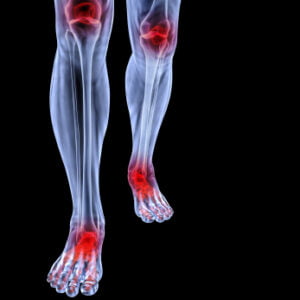
Knee and ankle pain can often be related due to their close anatomical proximity and interconnected functions during various movements. The knee and ankle joints are both major weight-bearing joints in the lower extremities, and they work together to support and facilitate movement during activities like walking, running, jumping, and squatting.
As a result, problems in one joint can sometimes lead to compensatory issues in the other, creating a link between knee and ankle pain. Here are some ways knee and ankle pain can be related:
- Biomechanics: The knee and ankle joints are part of a kinetic chain, where the movement in one joint affects the movement in adjacent joints. For example, if there is a misalignment or dysfunction in the knee joint, it can alter the mechanics of the ankle joint and vice versa, potentially leading to pain in either or both joints.
- Gait Changes: When individuals experience knee pain, they may unconsciously alter their gait (walking pattern) to reduce pressure on the painful knee. Such gait alterations can put additional stress on the ankle joint, leading to ankle pain.
- Compensatory Movements: Pain or weakness in one joint can cause compensatory movements in adjacent joints to offload stress. For instance, if the ankle joint is injured or unstable, a person may shift their weight and movement patterns to the knee to avoid stressing the ankle, which can lead to knee pain.
- Overuse and Overcompensation: Athletes or individuals engaging in physical activities may develop overuse injuries in one joint, leading to overcompensation in the other joint. For example, if a person has chronic ankle instability, they may put more weight and pressure on the knee during certain movements, which can result in knee pain.
- Shared Ligaments and Muscles: The knee and ankle joints share some ligaments and muscles that provide stability and support during movement. Injuries or imbalances in these shared structures can cause pain in both joints.
- Systemic Conditions: Some systemic conditions, such as rheumatoid arthritis or gout, can affect multiple joints in the body, including both the knee and ankle.
Preventing Knee and Ankle Pain
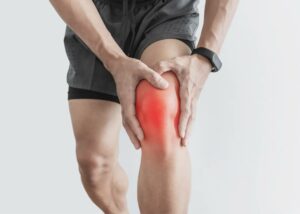
Preventing knee and ankle pain involves adopting healthy lifestyle habits, maintaining proper body mechanics during physical activities, and taking steps to protect and strengthen these joints. Here are some preventive measures to reduce the risk of knee and ankle pain:
- Maintain a Healthy Weight: Excess body weight can put additional stress on the knee and ankle joints. By maintaining a healthy weight through a balanced diet and regular exercise, you can reduce the load on these joints and lower the risk of pain and injury.
- Stay Active and Exercise Regularly: Engage in regular low-impact exercises to strengthen the muscles around the knees and ankles, such as walking, swimming, cycling, or using an elliptical machine. Strong muscles provide better support and stability for the joints.
- Warm-Up and Stretch: Before engaging in physical activities or exercise, perform a proper warm-up to increase blood flow to the muscles and prepare them for movement. Follow it up with dynamic stretching to improve flexibility and reduce the risk of injury.
- Use Proper Footwear: Wear supportive and well-fitting footwear appropriate for the activity. Shoes with good arch support and cushioning can help reduce the impact on the knees and ankles during walking, running, or other exercises.
- Avoid Overtraining and Overuse: Give your knees and ankles time to rest and recover between workouts or strenuous activities to prevent overuse injuries. Listen to your body and avoid pushing yourself too hard.
- Maintain Good Posture: Proper posture can help distribute the body’s weight evenly and reduce strain on the knees and ankles. Pay attention to your posture during daily activities and while sitting, standing, or lifting.
- Use Correct Techniques: If you participate in sports or activities that involve running, jumping, or rapid changes in direction, learn and use proper techniques to reduce the risk of injuries to the knees and ankles.
Conclusion
In conclusion, knee and ankle pain can significantly impact an individual’s daily life and overall well-being. Understanding the root causes, common conditions, and interconnections between these joints is crucial for finding relief and effective management strategies.
Let’s take a step towards a life free from knee and ankle pain by implementing preventive measures, seeking timely treatment, and making positive lifestyle changes. By doing so, we can enjoy an active and pain-free life, empowering ourselves to embrace life’s adventures with confidence and enthusiasm.
Physical Therapy helps patients recover from pain. If you’re experiencing an Ankle, Back, Shoulder, Knee, Neck, Elbow, Hip, or Arthritis pain, a physical therapist at PhysioMantra can help: Book an online physical therapy session.

